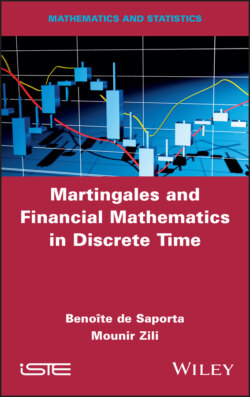Читать книгу Martingales and Financial Mathematics in Discrete Time - Benoîte de Saporta - Страница 15
1.2.5. Convergence of sequences of random variables
ОглавлениеTo conclude this section on random variables, we will review some classic results of convergence for sequences of random variables. Throughout the rest of this book, the abbreviation r.v. signifies random variable.
DEFINITION 1.17.– Let (Xn)n≥1 and X be r.v.s defined on (Ω, , ℙ).
1 1) It is assumed that there exists p > 0 such that, for any n ≥ 0, [|Xn|p] < ∞, and [|X|p] < ∞. It is said that the sequence of random variables (Xn)n≥1 converges on the average of the order p or converges in Lp towards X, ifWe then write In the specific case where p = 2, we say there is a convergence in quadratic mean.
2 2) The sequence of r.v. (Xn)n≥1 is called almost surely (a.s.) convergent towards X, if
We then write
THEOREM 1.1 (Monotone convergence theorem).– Let (Xn)n≥1 be a sequence of positive and non-decreasing random variables and let X be an integrable random variable, all of these defined on the same probability space (Ω, P). If (Xn) converges almost surely to X, then
THEOREM 1.2 (Dominated convergence theorem).– Let (Xn)n≥1 be a sequence of random variables and let X be another random variable, all defined on the same probability space (Ω, , ℙ). If the sequence (Xn) converges to X a.s., and for any n ≥ 1, |Xn|≤ Z, where Z is an integrable random variable, then and, in particular,
THEOREM 1.3 (Strong law of large numbers).– Let (Xn)n≥1 be a sequence of integrable, independent random variables from the same distribution. Then,
